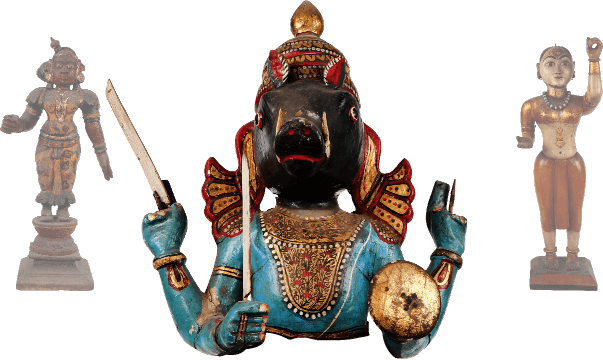Title : Sample Piece of Chikan Work in One Cotton
Accession No : 92/7805 (20)
Small handkerchief with small butis.
Source
- RepositoryNational Crafts Museum and Hastkala Academy
- CollectionMuseum Collection
Provenance
- CountryIndia
- StateUttar Pradesh
- DistrictLucknow
Condition
- ConditionGood
- Action NoteCNR
Dimensions
- Measurement (CMS)17x16cms.
Significance
- ReligiousChikankari’s origin has multiple versions, and gender difference in perception to quality of work have also played an important part. One speaks about a traveler taught Chikankari to a peasant in return of water to drink. The feminine version talks about empress Nur Jahan’s contribution for commissioning delicate motifs and elements found on the Isfahan Mosque to be translated onto stitchery. Another story credits an anonymous princess from Murshidabad for embroidering delicate muslin to attract the attention of the Nawab and other ladies followed the same path to master the art of embroidery to get the attention of Nawab.
- Socio economicChikan work or ChikanKari (kari meaning work in Hindi) is thought to have originated in Bengal and to have been practiced in Dacca and Kolkata. Jamdani was previously confined to Dacca, but from 1850 onwards, very fine white-on-white Jamdani was produced near Tanda, Faizabad which is said to have resulted in the beginning of Lucknow chikan-kari industry. Once a symbol of sophistication, mill-made fabrics, cotton polyester mixtures and thin silk have resulted in quality of chikan work to suffer a catastrophic decline. Loss of patronage resulted in the industry becoming oriented towards mass market and loss of skilled embroiders due to cheap imitation of this rich textile exported abroad and distributed domestically. In December 2008, the Geographical Indication Registry (GIR) granted chikankari Geographical Indication (GI) designation, recognizing Lucknow as an exclusive centre for the textile.
- ArtisticOriginating from Lucknow, Uttar Pradesh, chikankari, also known as chikan work, represents a unique style of hand embroidery. This craft involves intricate needlework, employing a variety of stitches and is traditionally executed with white thread on white fabric. This chikankari patch has been embroidered with multiple hul stitches spread across the fabric along with murri phada and murri. Hul (detached eyelet stitch) is a tiny hole punched in the fabric with a needle, teasing apart weft and warp of the cloth. The hole is held in place by tiny straight compact stitches all around and it is worked on the right side of the cloth.
Description
- DescriptionSmall handkerchief with small butis.
- Inscription/Markings No
- Reference"Chikankari; A lucknawi Tradition , Paola Manfredi pg. 26 27,119,125,207 Indian textiles; John Gillow , pg 160,161 "
- KeywordChikankari, white on white

